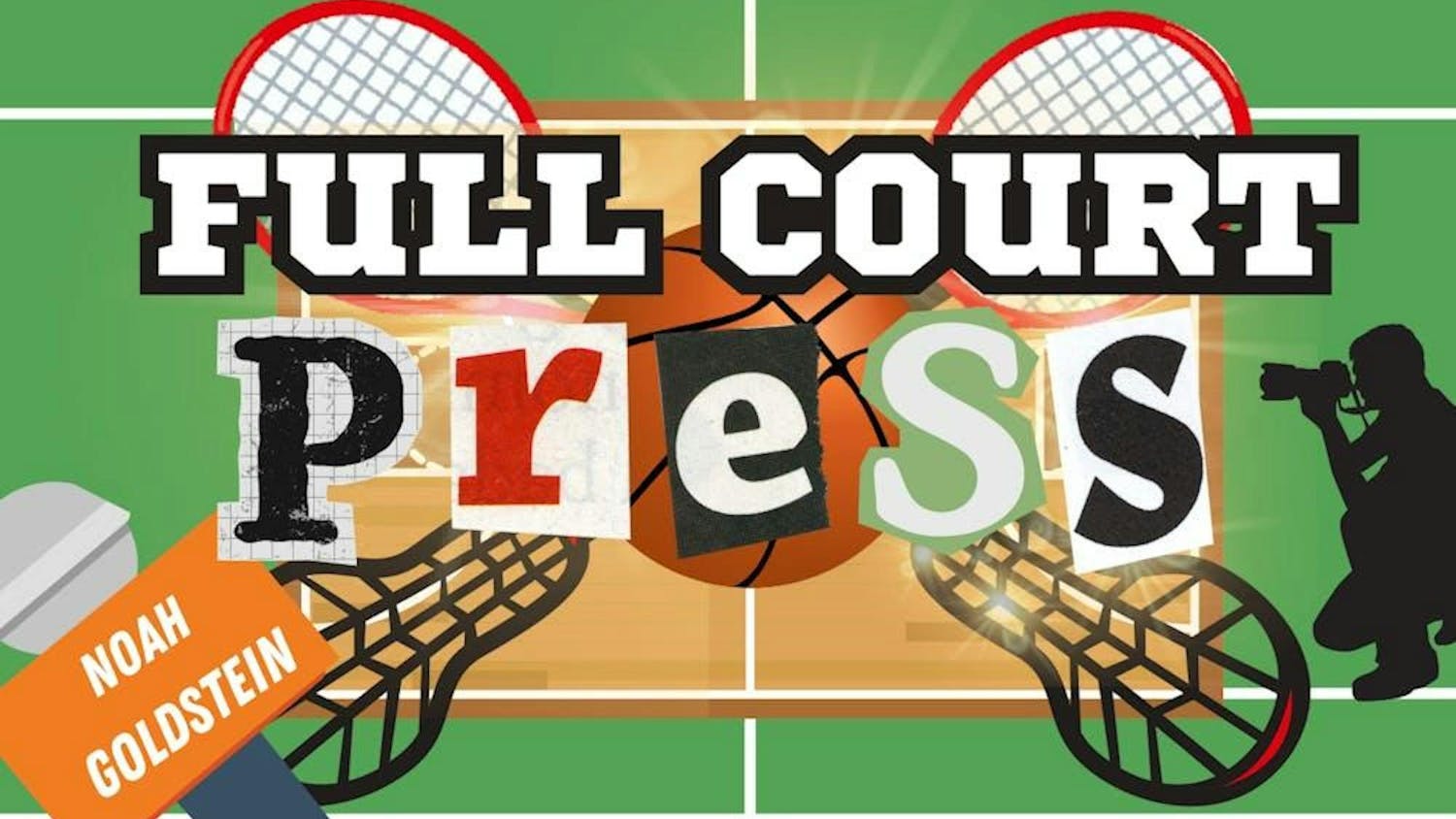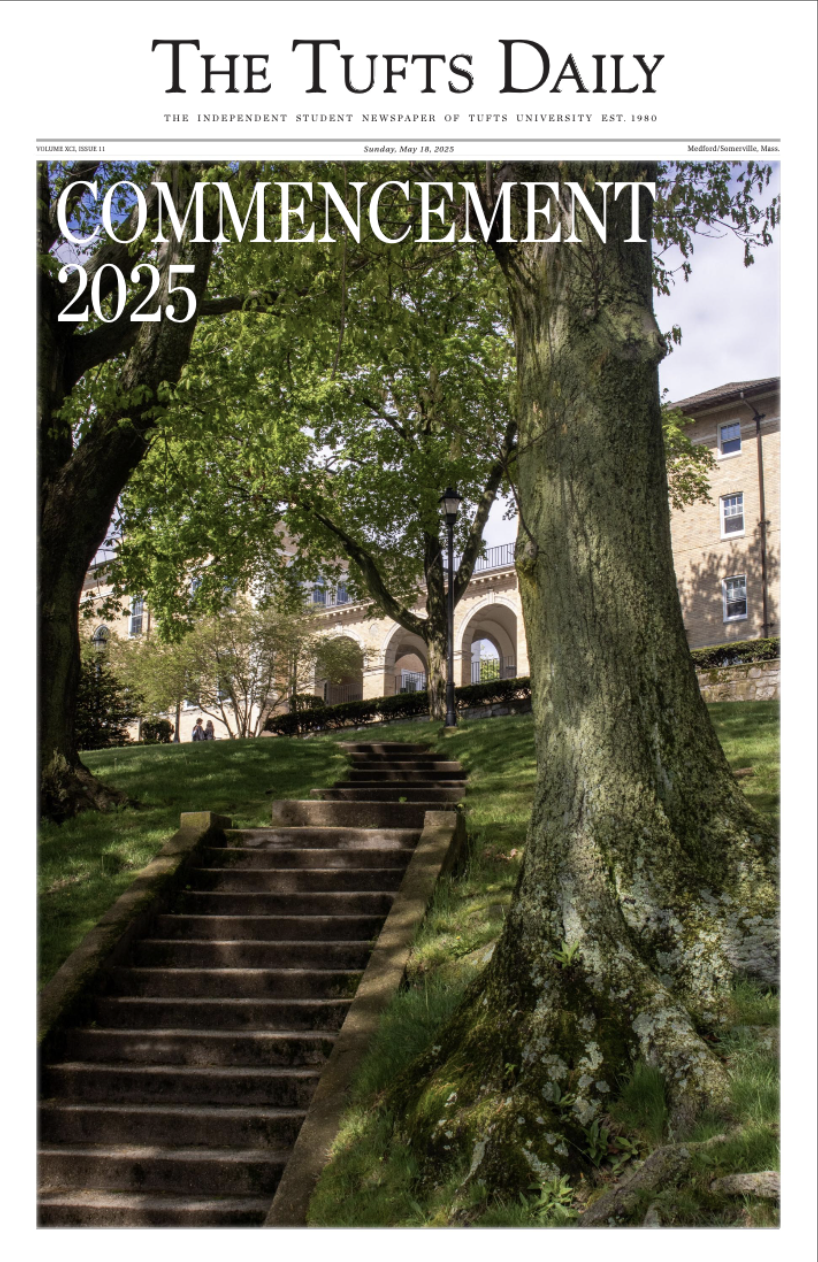In the 2007-2008 season, Tufts made its only other trip in program history to the Sweet 16. Buoyed by the defense that has become a hallmark of the team's play, the Jumbos upset No. 5 Mary Washington before falling in a tight game to No. 4 Messiah in the Elite Eight.
This year, in the squad's second trip to the NCAA tournament's second weekend, the task may be even taller. Tonight, at 6:30 p.m., Tufts will face off against No. 12 St. Thomas, a team that has not lost since Nov. 16. Their reward if they pull off the upset? A date with either undefeated No. 2 Chicago University — the hosts of the sectional — or No. 5 Calvin the following evening.
To put it into perspective, Tufts has four more losses than the other three schools combined.
But that is no reason to count out the Jumbos just yet. They play one of the toughest schedules in the country and will not be caught off guard by anything they see over the next two days. They also know what it is like to play with the best, having already matched up against No. 1 Amherst twice.
Before we start counting our Final Four chickens before they hatch, the Jumbos need to get by the Tommies, a steep slope to climb in and of itself. What would it take to turn the tables and tip the Tommies? For starters, the following four things:
Minimize the size advantage
To say that St. Thomas is tall would be an understatement. The Tommies start four players who are at least 5-foot-11. By comparison, the Jumbos have just one player that tall — freshman Hayley Kanner — on their entire active roster. Tufts gives up an average of four inches — nearly half a head — at each position in their starting lineup. That is no insignificant differential and could easily lead to the Jumbos' being locked out of the battle on the boards.
So how can they neutralize this imposing disadvantage? It all starts with NESCAC Defensive Player of the Year Tiffany Kornegay, who at 5-foot-6 was still second in the conference in rebounds. The senior is going to need to crash the boards harder than ever, and can ill-afford to take even one play off. Her athleticism should allow her to win the chase to any long rebounds, and her quick hands may allow her to steal a few extra short ones away, or at least force jump balls.
Of course, the basics of boxing out as a team — a simple tactic the Jumbos employ extremely well — will be just as important for giving Kornegay clear lanes to the ball.
While it will not be the easiest thing to overcome, Tufts, which starts one of the shortest starting lineups still standing in the tournament, is more than used to getting the most out of the size they do have. They have averaged a respectable rebound margin of +5.6 per game, and will be well-prepared to handle the Tommies' height.
Run, run and run
The Jumbos not only need to neutralize the Tommies' advantages, but also capitalize on their own. Tufts struggles in half-court sets already, and against a team like St. Thomas, things will only be more challenging. But the Jumbos excel at running the floor, something the Tommies may struggle to keep up with. Just about any Tufts player can bring the ball up, and few players in the country run the fast break better than Kornegay. Freshman Kelsey Morehead does a good job in that area as well.
Fast break opportunities will accomplish two things for the Jumbos. First, it will likely provide the only chance for the team to get into the lane untouched, something that should be coveted by a team so strong off the dribble. Secondly, it will allow them to force the Tommies into some cheap fouls that may put some of their starters on the bench.
The final advantage to a run-and-gun style is tiring out the opposition. St. Thomas has been a worse second-half team all season, while Tufts excels in that period thanks to a deep rotation and strong conditioning. If the Jumbos can tire out the Tommies, they could potentially pull away late.
Deny the ball in the post
When a talented opposing player with a good deal of height has the ball securely in the post, there is often little the Jumbos can do. Amherst senior Lem Atanga McCormick has had great success in that regard in the teams' matchups this season, while Colby senior Jil Vaughan had a field day herself.
The key to stopping such play comes from denying the setup all together. The Jumbos did a great job of this against Johns Hopkins junior Alex Vasilla, who was never able to get comfortable in the post thanks to swarming help defense by Tufts senior Kate Barnosky and others.
But against St. Thomas, that game plan might not foster the same success. Hopkins relied on one central post presence, so Barnosky could leave her defensive assignment without conceding a cheap basket on a simple pass across the paint. But the Tommies often employ three post players at once, making such a strategy much less achievable.
Instead, the Jumbos might look to prevent post play even earlier in possessions. Though coach Carla Berube has rarely employed it this season, a full court press could wreak havoc on a Tommies side that is often low on guards in the lineup.
With Jumbos swarming down the court, they may be able to force senior guard Carolyn Dienhart into some mistakes. And at the worst, the press gets broken and one of the St. Thomas post players gets a high percentage shot she would have gotten anyway in the half court.
Tufts could also choose to bring the help defense from the perimeter instead of from across the lane. If the Jumbo guarding the player that makes the pass down low were to follow the ball inside, that could force passes back out to the perimeter. While this could lead to open jumpers, it would at least prevent easy layups. If Dienhart — who has taken just 31 three-pointers all season and averages just 6.3 points per game — beats them, the Jumbos can hold their heads high knowing it just was not in the cards.
Shoot the ball well
This final point may seem simple enough, but it would be impossible to emphasize it too much. As mentioned earlier, the Jumbos will have trouble finding shots in the lane. Their half-court offense is adept at facilitating open jumpers, but if they can't hit anything, no amount of defense will save them.
Shooting struggles have almost done Tufts in twice this tournament, as they blew double-digit leads to both Misericordia and Johns Hopkins in the second half due to prolonged scoring droughts. By now, Berube should have a strong sense of who her shooters are, and she needs to rely heavily on them. Freshman guard Hannah Foley is the team's best three-point shooter — shooting nearly 40 percent — and that, mixed with her height and speed running the court, should earn her significant minutes tonight. Barnosky and sophomore Liz Moynihan have also had hot hands and should have plenty of time to make use of them.
But no matter how well they play in every aspect of the game, the Jumbos are going to need to go to the line and seal the deal. They shot free throws so poorly against Misericordia in the opening round that their season almost ended right then and there, but did so well at the line against Johns Hopkins that they were able to put the game away with aplomb. Free throws may be a bit of a Jekyll and Hyde affair for Tufts, but as long as the good doctor shows up, there is no reason to think the Jumbos cannot spring the upset.





